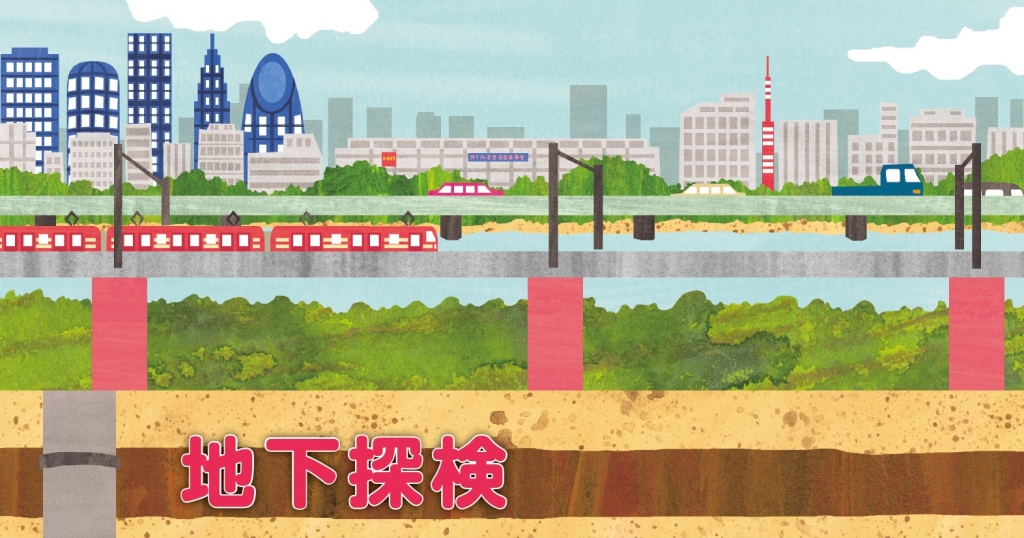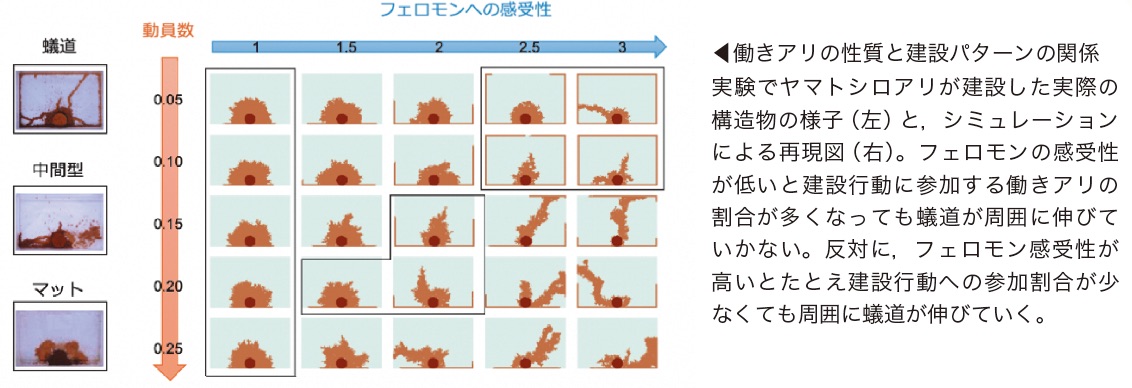- someone
[someone vol.38] [Feature: Underground Exploration] When Blind Termites Build an Underground Tunnel
2017.06.13
Earthworms, moles, soil microorganisms...there are many creatures crawling around in the ground. Termites, which sometimes devour the pillars and foundations of wooden houses, are one type of subterranean insect. Although they are blind and have no blueprints, they sometimes work together in groups to build tunnels tens of meters long. How do they skillfully live in the underground world where light does not reach?
Living only on their antennae
Termites are actually very vulnerable in the natural world. Their transparent bodies make them vulnerable to sunlight, and if they are seen on the ground, they are easily targeted by natural enemies such as black ants, spiders, and lizards. For this reason, termites live in the pitch-dark underground world, creating special tunnels called gidou (termite pathways) in the soil and sometimes above ground to safely search for food. Termites that live in the dark have degenerate eyes and rely on the two antennae on their heads to sense pheromones (smells) and other nearby termites with their sense of touch. Termites, which are only about 5 mm in length, can obtain information only within a few centimeters of their surroundings. Nevertheless, the termites work together with their friends to build a subterranean termitairy that resembles a gigantic structure. However, there is no leader to direct them and no blueprints. Dr. Nobuaki Mizumoto of Kyoto University is taking on the challenge of elucidating the mysterious behavior of these subterranean creatures.
Pheromones that signal construction
The termites that Dr. Mizumoto studies, the Japanese termites, are widespread in Japan from Hokkaido to Kyushu, and live in nests of several thousand to several tens of thousands of ants living in multiple pieces of wood. Worker ants stick pieces of wood and soil together one after another to form tubular dovetails that stretch underground. The secret of communication between the invisible worker ants lies in a substance called cement pheromone, which they secrete when pasting materials together. This pheromone indicates that a certain area is under construction, and upon receiving this message, the worker ants attach the next material to that area to create an ant trail. The shape and size of the ant trails thus created vary from nest to nest. Research to date
In research, it was said that the way a termite trail is formed is affected by the number of termites and the external environment, such as materials and temperature. However, Dr. Mizumoto discovered that each nest has its own unique characteristics even when these conditions are the same.
Each and every one of them is shaped by the commune.
Some termites are digging a new termite path, while others are digging a new one, not in the middle of a construction project. Close observation of the behavior of these termites revealed differences in their behavior patterns. This may be due to differences in their ability to sense the cement pheromones secreted by their fellow workers at the construction site. In addition, we created a computer model to reproduce the construction behavior of termites and simulated what factors affect their construction behavior. As a result, by changing the sensitivity of individual termites to cement pheromones and the proportion of termites involved in construction, we were able to reproduce a situation that closely resembled that observed in actual construction of termite dovecotes. Simple factors such as the number of worker ants building the dove paths and their pheromone sensitivity created the individuality of the dove paths produced by each nest. It may be said that the communication strengths and weaknesses of individual termites create the diversity of construction.
Challenging the secrets of social life underground
In addition to building termite trails, there are many other tasks involved in the subterranean life of termites, such as repairing nests, caring for the larvae, and searching for food. What work is needed now and how much effort to devote to which tasks must be adjusted to the surrounding conditions at the time. How do termites, which cannot see, monitor their companions and change their behavior? There are still many mysteries hidden in the communication that takes place underground in the absence of light.
(Text by Akie Kaneko)

Interviewed by: Tadayuki Mizumoto, Department of Applied Biological Sciences, Graduate School of Agriculture, Kyoto University
